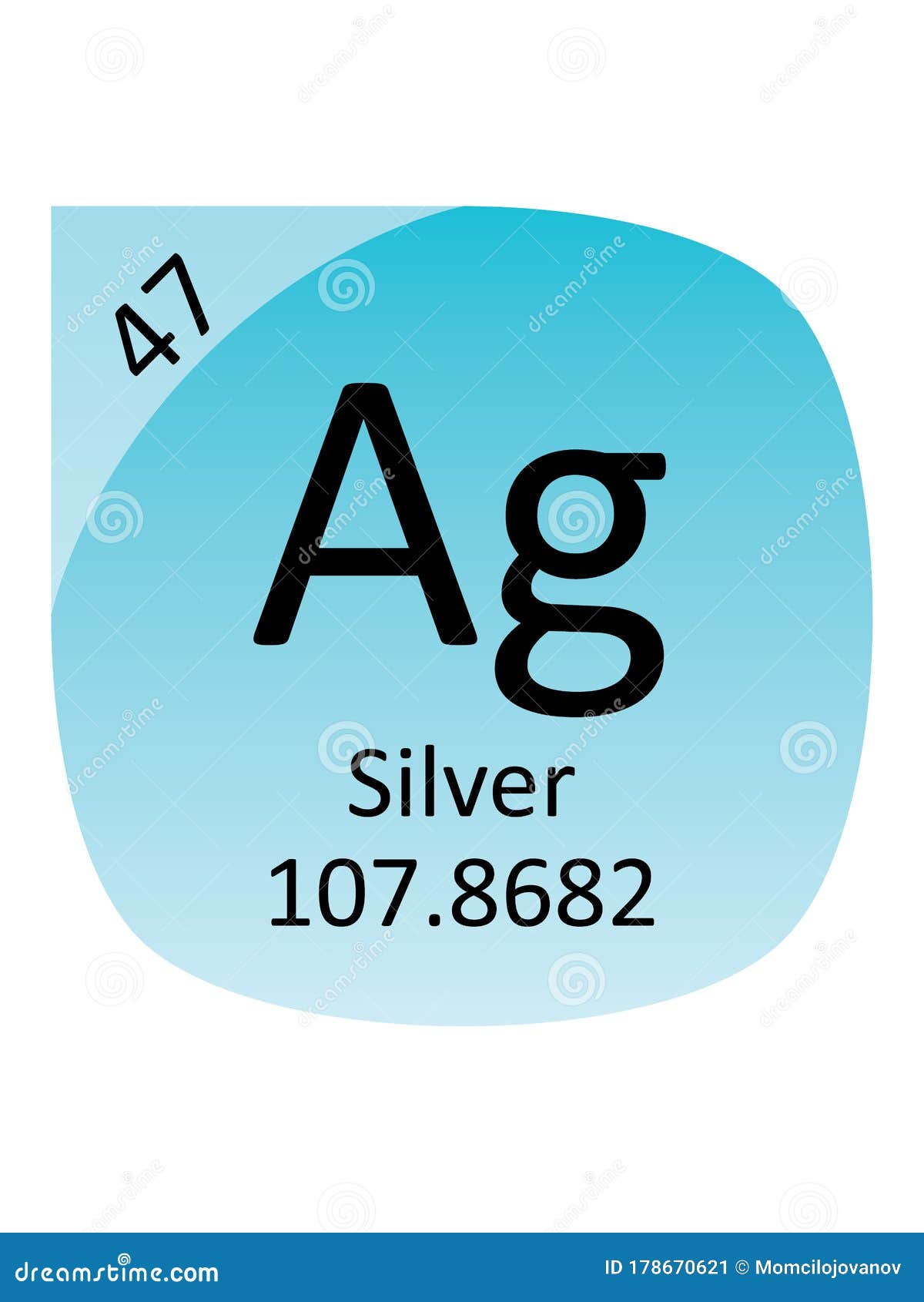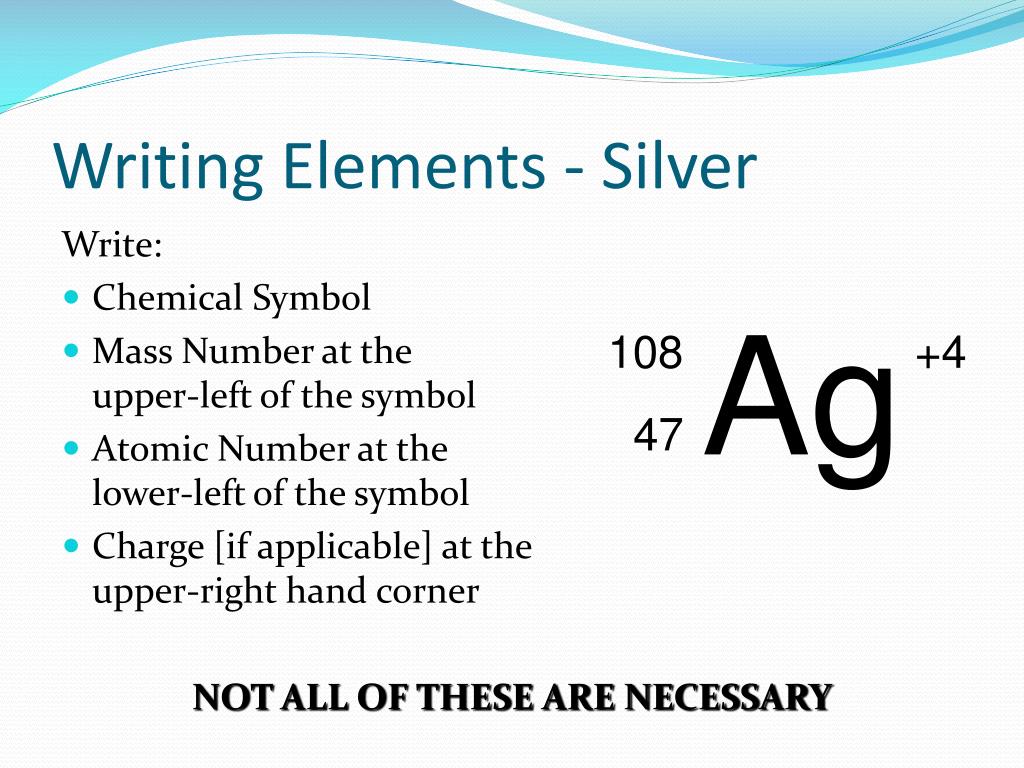Element Silver - Ag
- Silver Mass Number Rounded
- Silver Mass Number
- Silver Mass Number And Atomic Number
- Element Silver Mass Number
Comprehensive data on the chemical element Silver is provided on this page; including scores of properties, element names in many languages, most known nuclides of Silver. Common chemical compounds are also provided for many elements. In addition technical terms are linked to their definitions and the menu contains links to related articles that are a great aid in one's studies.
The atomic number of a Silver atom (Ag)=47 Therefore the number of protons in the nucleus =47 The mass number of Ag= 107g/mol 107 g / m o l Become a member and unlock all Study Answers.

Silver Menu
- Silver Page One
- Silver Page Two
- Silver Page Three

- Silver is a transition metal with element symbol Ag and atomic number 47. The element is found in jewelry and currency for its beauty and value and in electronics for its high conductivity and malleability.
- ››More information on molar mass and molecular weight. In chemistry, the formula weight is a quantity computed by multiplying the atomic weight (in atomic mass units) of each element in a chemical formula by the number of atoms of that element present in the formula, then adding all.
Overview of Silver
- Atomic Number: 47
- Group: 11
- Period: 5
- Series: Transition Metals
Silver's Name in Other Languages
- Latin: Argentum
- Czech: Stříbro
- Croatian: Srebro
- French: Argent
- German: Silber - s
- Italian: Argento
- Norwegian: Sølv
- Portuguese: Prata
- Russian: Серебро
- Spanish: Plata
- Swedish: Silver
Atomic Structure of Silver
- Atomic Radius: 1.75Å
- Atomic Volume: 10.3cm3/mol
- Covalent Radius: 1.34Å
- Cross Section (Thermal Neutron Capture)σa/barns: 63.6
- Crystal Structure: Cubic face centered
- Electron Configuration:
- 1s2 2s2p6 3s2p6d10 4s2p6d10 5s1
- Electrons per Energy Level: 2,8,18,18,1
- Shell Model
- Shell Model
- Ionic Radius: 1.26Å
- Filling Orbital: 4d10
- Number of Electrons (with no charge): 47
- Number of Neutrons (most common/stable nuclide): 61
- Number of Protons: 47
- Oxidation States: 1
- Valence Electrons: 4d10 5s1
Silver Mass Number Rounded
Chemical Properties of Silver
- Electrochemical Equivalent: 4.0246g/amp-hr
- Electron Work Function: 4.26eV
- Electronegativity: 1.93 (Pauling); 1.42 (Allrod Rochow)
- Heat of Fusion: 11.3kJ/mol
- Incompatibilities:
- Acetylene, ammonia, hydrogen peroxide, bromoazide, chlorine trifluoride, ethyleneimine, oxalic acid, tartaric acid
- Ionization Potential
- First: 7.576
- Second: 21.49
- Third: 34.83
- Valence Electron Potential (-eV): 11.4
Physical Properties of Silver
- Atomic Mass Average: 107.8682
- Boiling Point: 2436K 2163°C 3925°F
- Coefficient of lineal thermal expansion/K-1: 19.2E-6
- Conductivity
- Electrical: 0.63 106/cm Ω
Thermal: 4.29 W/cmK
- Electrical: 0.63 106/cm Ω
- Density: 10.5g/cc @ 300K
- Description:
- Very soft and malleable silver metal. Appearance and odor vary depending upon specific compound.
- Elastic Modulus:
- Bulk: 103.6/GPa
- Rigidity: 30.3/GPa
- Youngs: 82.7/GPa
- Enthalpy of Atomization: 284.5 kJ/mole @ 25°C
- Enthalpy of Fusion: 11.3 kJ/mole
- Enthalpy of Vaporization: 255.1 kJ/mole
- Flammablity Class: Non-combustible solid (except as dust)
- Freezing Point:see melting point
- Hardness Scale
- Brinell: 24.5 MN m-2
- Mohs: 2.5
- Vickers: 251 MN m-2
- Heat of Vaporization: 250.58kJ/mol
- Melting Point: 1234K 961°C 1762°F
- Molar Volume: 10.27 cm3/mole
- Optical Reflectivity: 97%
- Physical State (at 20°C & 1atm): Solid
- Specific Heat: 0.235J/gK
- Vapor Pressure = 0.342Pa@961°C
Regulatory / Health
- CAS Number
- 7440-22-4
- RTECS: VW3500000
- NFPA 704
- Health: 1
- Fire: 2
- Reactivity:
- Special Hazard:
- OSHAPermissible Exposure Limit (PEL)
- TWA: 0.01 mg/m3
- OSHA PEL Vacated 1989
- TWA: 0.01 mg/m3
- NIOSHRecommended Exposure Limit (REL)
- TWA: 0.01 mg/m3
- IDLH: 10 mg/m3
- Routes of Exposure: Inhalation; Ingestion; Skin and/or eye contact
- Target Organs: Nasal septum, skin, eyes
- Levels In Humans:
Note: this data represents naturally occuring levels of elements in the typical human, it DOES NOT represent recommended daily allowances.- Blood/mg dm-3: <0.003
- Bone/p.p.m: 0.01-0.44
- Liver/p.p.m: 0.005-0.25
- Muscle/p.p.m: 0.009-0.28
- Daily Dietary Intake: 0.0014-0.08 mg
- Total Mass In Avg. 70kg human: 2 mg
Who / Where / When / How
- Discoverer: Known to ancient civilization
- Discovery Location: Unknown
- Discovery Year: Unknown
- Name Origin:
- Latin argentum (silver). Silver from Anglo-Saxon seolfor for silver.
- Abundance of Silver:
- Earth's Crust/p.p.m.: 0.07
- Seawater/p.p.m.:
- Atlantic Suface: N/A
- Atlantic Deep: N/A
- Pacific Surface: 0.0000001
- Pacific Deep: 0.0000024
- Atmosphere/p.p.m.: N/A
- Sun (Relative to H=1E12): 7.1
- Sources of Silver:
- Found in ores called argentite (AgS), light ruby silver (Ag3 AsS3), dark ruby silver (Ag3SbS3) and brittle silver. Silver is often obtained as a by-product of refining other metals like copper and gold. World wide production is around 9950 tons per year. Primary mining areas are Mexico, Bolivia, Honduras, Canada, USA.
- Uses of Silver:
- Used in alloys for jewelry, in many compounds, photographic film and paper electronics, mirrors and batteries.
- Additional Notes:
Silver Menu
- Silver Page One
- Silver Page Two
- Silver Page Three
Silver Mass Number
References
A list of reference sources used to compile the data provided on our periodic table of elements can be found on the main periodic table page.


Related Resources
- Anatomy of the Atom
Answers many questions regarding the structure of atoms. - Molarity, Molality and Normality
Introduces stoichiometry and explains the differences between molarity, molality and normality. - Molar Mass Calculations and Javascript Calculator
Molar mass calculations are explained and there is a JavaScript calculator to aid calculations. - Chemical Database
This database focuses on the most common chemical compounds used in the home and industry.

Citing this page
If you need to cite this page, you can copy this text:
Kenneth Barbalace. Periodic Table of Elements - Silver - Ag. EnvironmentalChemistry.com. 1995 - 2021. Accessed on-line: 4/24/2021
https://EnvironmentalChemistry.com/yogi/periodic/Ag.html
.
Linking to this page
Silver Mass Number And Atomic Number
If you would like to link to this page from your website, blog, etc., copy and paste this link code (in red) and modify it to suit your needs:
<a href='https://EnvironmentalChemistry.com/yogi/periodic/Ag.html'>echo Periodic Table of Elements: Silver - Ag (EnvironmentalChemistry.com)</a>- Comprehensive information for the element Silver - Ag is provided by this page including scores of properties, element names in many languages, most known nuclides and technical terms are linked to their definitions.
.
NOTICE: While linking to articles is encouraged, OUR ARTICLES MAY NOT BE COPIED TO OR REPUBLISHED ON ANOTHER WEBSITE UNDER ANY CIRCUMSTANCES.
Element Silver Mass Number
PLEASE, if you like an article we published simply link to it on our website do not republish it.
